Tata Power Share Price Target
Tata Power, a prominent part of the Tata Group, is one of India’s largest integrated power companies. Established over a century ago, the company operates across multiple segments, including electricity generation, transmission, and distribution. Tata Power has also been at the forefront of India’s renewable energy push, investing in solar and wind power to meet rising sustainability demands. With a robust presence in traditional and renewable energy, Tata Power is positioning itself as a leader in India’s transformation of the power sector.
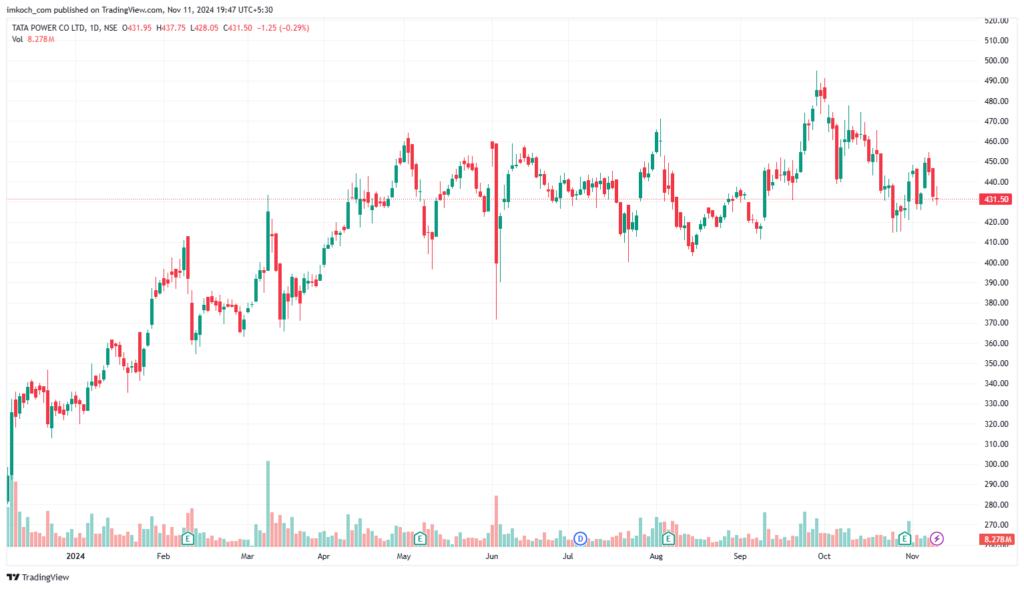
Recent Market Overview: Tata Power has seen significant interest due to its strong focus on renewable energy and infrastructure improvements, aligning with India’s energy goals. As global interest in renewable energy rises, Tata Power’s investments in sustainable solutions place it in a strategic position for potential growth.
Here’s a projected table for Tata Power’s share price targets, based on hypothetical growth rates and market trends for each year. This table estimates high and low price ranges for varying market conditions.
| Year | Projected Low Price (₹) | Projected High Price (₹) | Notes |
|---|---|---|---|
| 2025 | ₹320 | ₹380 | Reflects growth in renewable energy investments and increased capacity. |
| 2030 | ₹490 | ₹580 | Expected boost from clean energy initiatives and government incentives. |
| 2035 | ₹700 | ₹820 | Potential impact of green energy dominance and reduced carbon footprint. |
| 2040 | ₹850 | ₹980 | Increased profitability and renewable market share may drive growth. |
| 2045 | ₹1100 | ₹1250 | Matured investments in renewable projects contributing to strong returns. |
| 2050 | ₹1300 | ₹1500 | Long-term growth fueled by clean energy leadership, reaching peak value. |
These projections are indicative and are influenced by a range of factors, including Tata Power’s renewable energy expansion, global energy prices, regulatory changes, and economic conditions. Keep in mind that stock performance is speculative and depends on actual company performance, market trends, and other unforeseen factors. Always conduct in-depth research or consult a financial advisor for guidance.
Note: The projections mentioned in this article assume no stock splits, mergers, or other corporate actions that could alter the share count or affect the price per share. The targets are purely indicative and should be reviewed in the context of Tata Power’s performance and broader market dynamics. Please conduct your research or consult a financial expert before making investment decisions. This article is for educational purposes only.
Table of Contents
Financial Performance Overview for Tata Power:
Revenue Growth:
Over recent years, Tata Power has shown steady revenue growth driven by expansions in its renewable energy segment, including solar and wind power, as well as investments in infrastructure and electric vehicle (EV) charging stations. The company’s annual revenue has consistently trended upward, largely due to increased energy demands, government initiatives supporting clean energy, and Tata Power’s diversification into various segments within the power sector. Tata Power Balance sheet
Profit Margins:
Tata Power’s net profit margins have been affected by the high operational costs involved in power generation, but it has recently improved profitability through strategic initiatives. Notably, the company has streamlined operations and focused on renewable energy sources with lower operational costs, which has positively impacted margins. Despite challenges from fluctuations in fuel prices and regulatory changes, Tata Power has been able to maintain stable profit margins due to efficient cost management. Profit & Loss Statement of Tata Power Ltd
Debt and Capital Structure:
Historically, Tata Power has managed a relatively high debt load due to capital-intensive investments in infrastructure and acquisitions. However, in recent years, the company has made efforts to reduce its debt burden by divesting non-core assets and improving cash flows from operations. This has strengthened its balance sheet, allowing it to allocate more resources toward renewable energy projects and future growth opportunities. Cash Flow Statement of Tata Power
Earnings per Share (EPS):
Tata Power’s EPS has fluctuated due to changes in its capital structure and investments. However, as the company continues to focus on renewables and more efficient energy production methods, its EPS has shown signs of stabilization and growth. Increasing electricity demand, combined with Tata Power’s growing footprint in the clean energy sector, has helped improve its earnings potential over time.
Key Financial Ratios:
- Return on Equity (ROE): Tata Power’s ROE has seen an upward trend, particularly as the company has optimized its asset base and improved operational efficiency. This ratio indicates that Tata Power is generating reasonable returns on shareholders’ equity.
- Debt-to-Equity Ratio: While historically on the higher side due to capital expenditures, Tata Power has been actively working to lower this ratio. The decrease signifies better debt management and a more balanced capital structure.
Investments and Expansion Plans
The company has committed to aggressive expansion plans in the renewable energy sector. Tata Power aims to significantly increase its solar and wind energy capacity in the coming years, aligning with India’s focus on sustainable energy. Its EV charging infrastructure initiative is also a critical growth area, as India moves toward electrification in transportation.
Cash Flow and Dividend Policy:
Tata Power has demonstrated strong cash flow from operations, allowing it to reinvest in its core and emerging businesses. The company has also maintained a balanced approach to dividend payments, rewarding shareholders while retaining funds for future growth.
Summary of Financial Performance (Key Highlights)
- Revenue Growth: Driven by renewable energy and diversified services.
- Profit Margins: Improved through cost optimization and renewable investments.
- Debt Reduction: Focused on lowering the debt-to-equity ratio.
- Expansion Focus: Investing in clean energy, EV infrastructure, and technological upgrades.
- Strong Cash Flow: Ensuring sustainable dividend policies and growth funding.
This performance overview reflects Tata Power’s strategy to position itself as a leader in the Indian energy sector, especially in renewable energy.
Tata Power Share Price Target:
Tata Power Share Price Target 2025:
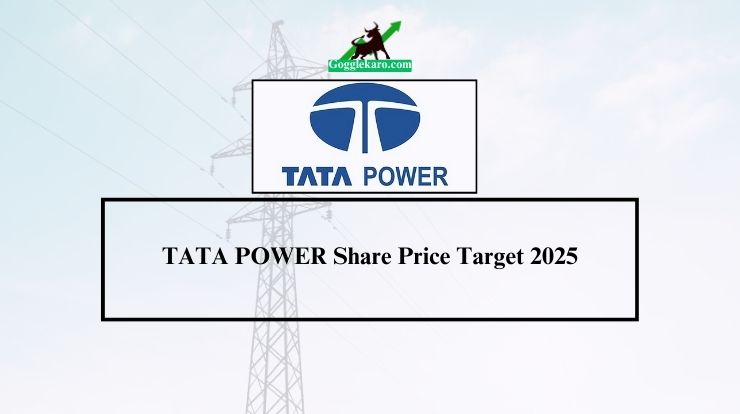
- High Price: ₹350
- Low Price: ₹300
By 2025, Tata Power’s stock is expected to see significant growth due to its ongoing investments in renewable energy and electric vehicle (EV) infrastructure. With India’s aggressive push for green energy and Tata Power’s leading role in solar and EV charging networks, the target range could be between ₹300 and ₹350. This growth could also be influenced by the company’s efforts to reduce debt and increase operational efficiencies.
Tata Power Share Price Target 2030:
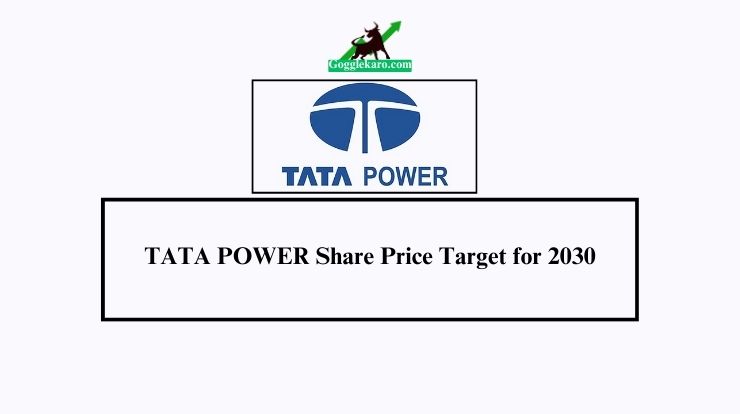
Low Price: ₹600
High Price: ₹700
Looking towards 2030, Tata Power aims to become a dominant force in India’s green energy landscape, potentially achieving carbon-neutrality milestones. With the continued expansion of its solar, wind, and EV charging infrastructure, as well as favourable government policies, the share price could reach between ₹600 and ₹700. This increase would reflect its solidified position as a renewable energy leader and the benefits from long-term strategic projects coming to fruition.
Tata Power Share Price Target 2035:
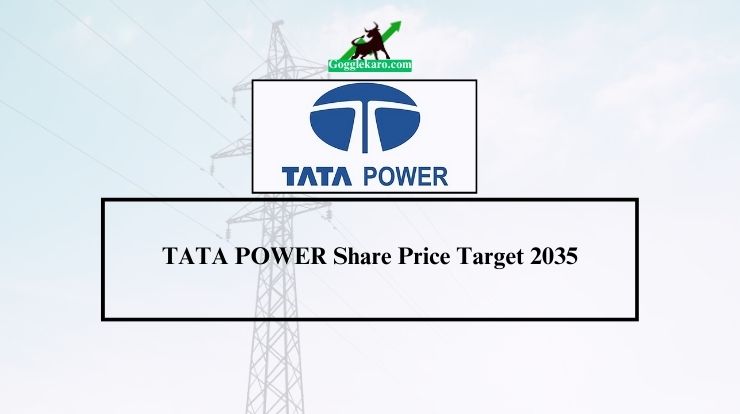
Low Price: ₹1000
High Price: ₹1200
By 2035, Tata Power’s advancements in technology and further diversification of its energy portfolio should lead to a robust position in both domestic and international markets. The share price could rise to ₹1,000 to ₹1,200 as it captures a larger market share in renewables and potentially explores partnerships or acquisitions to drive growth. Additionally, increased efficiency and sustainable energy production could boost profitability, supporting a higher valuation.
Tata Power Share Price Target 2040:

Low Price: ₹1500
High Price: ₹1800
In 2040, Tata Power’s continued evolution as a fully integrated green energy provider could see its shares trade in the range of ₹1,500 to ₹1,800. By this time, Tata Power is expected to play a pivotal role in India’s energy sector, with the majority of its operations based on renewable sources. Strategic investments in advanced technology, such as battery storage and smart grids, may enhance its growth potential and contribute to substantial gains in stock price.
Tata Power Share Price Target 2045:
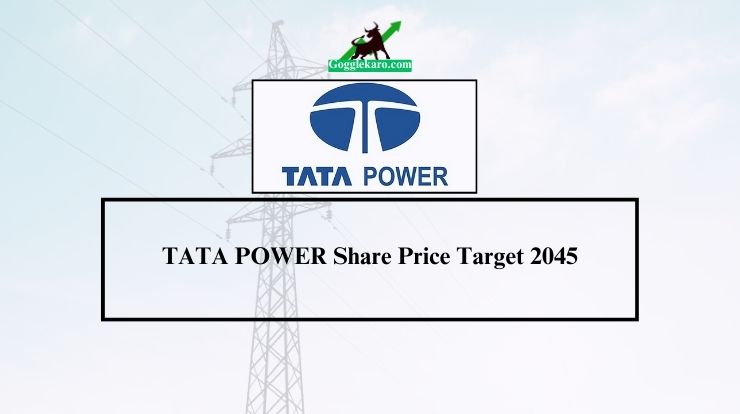
Low Price: ₹2000
High Price: ₹2500
By 2045, Tata Power’s stock is projected to benefit from its maturity and established presence in the renewable energy market. As it reaches the peak of its green energy capabilities, the share price could be expected to reach between ₹2,000 and ₹2,500. This target would reflect Tata Power’s stable revenue streams, reduced dependency on traditional energy, and possibly global expansion.
Tata Power Share Price Target 2050:

Low Price: ₹3000
High Price: ₹3500
In 2050, Tata Power’s position as a top renewable energy provider and its continued innovation in energy solutions could lead to a share price target in the range of ₹3,000 to ₹3,500. By this stage, the company would likely be capitalizing on a fully developed energy infrastructure and benefiting from decades of operational efficiencies and technological advancements in sustainable energy.
Risks Associated with TATA Power Investment:
When investing in Tata Power, it’s essential to consider several risk factors that could impact the stock’s performance and the company’s future growth. Here are the key risks associated with investing in Tata Power:
1. Regulatory and Policy Risks
- The energy sector is heavily regulated, and changes in government policies, tariffs, and environmental regulations can significantly affect Tata Power’s operations. For instance, shifts in renewable energy policies, tax benefits, or carbon taxes could impact profitability. Additionally, any delays or challenges in government support for green energy projects could hinder Tata Power’s growth plans in renewables.
2. Dependence on Renewable Energy Growth
- Tata Power’s future growth is closely tied to the expansion of renewable energy. However, renewable energy is subject to variability in production due to factors like weather conditions and seasonal fluctuations. Any underperformance in renewable capacity or challenges in scaling up green projects could impact the company’s revenue targets and share price.
3. Debt and Capital Requirements
- Tata Power has a high debt load, largely due to its capital-intensive projects. Interest rates and access to affordable financing can affect the company’s financial health. Rising debt could lead to higher interest expenses, affecting profitability. Also, refinancing risks or limited access to new capital could impact Tata Power’s ability to fund future projects, affecting growth prospects.
4. Technological and Operational Risks
- The energy sector is evolving rapidly with advancements in battery storage, grid technology, and other energy innovations. Tata Power faces the risk of potential technological disruptions, and the need to constantly upgrade or replace outdated technology could increase costs. Operational issues, such as plant inefficiencies or supply chain disruptions, could also affect performance.
5. Market Competition
- Tata Power competes with both established players and new entrants in the renewable energy market. Intense competition could lead to pricing pressures, potentially affecting margins. Additionally, if competitors make faster technological advancements or secure more government contracts, it may hinder Tata Power’s growth.
6. Foreign Exchange and International Risks
- With ambitions for global expansion, Tata Power faces foreign exchange risks and geopolitical uncertainties, especially when operating in international markets. Fluctuations in currency exchange rates could impact profitability, and political instability in foreign markets could pose risks to operations abroad.
7. Environmental and Climate Risks
- Although Tata Power is transitioning towards renewable energy, it still operates in traditional energy sectors like coal and gas. Changes in climate conditions, environmental risks, and extreme weather events could disrupt operations, especially in renewable sectors like solar and wind. Environmental regulations could also impose restrictions, leading to increased operational costs.
8. Macroeconomic Factors
- Broader economic factors such as inflation, interest rates, and economic slowdowns can affect energy demand, project financing, and customer spending. During economic downturns, there may be reduced industrial demand for power, which could impact Tata Power’s revenue.
9. Execution Risk
- Tata Power’s growth plan relies on the timely execution of its projects. Any delays, cost overruns, or operational issues with large-scale projects could harm investor confidence and affect financial results. Delays in expanding its renewable portfolio or issues in integrating new technologies can also impact expected returns.
Investors should weigh these factors carefully and stay updated on Tata Power’s strategies to mitigate these risks before making any long-term investment decisions.
Final Thoughts
Investing in Tata Power presents a compelling opportunity due to its strategic pivot toward renewable energy, strong market presence, and commitment to sustainability. With India’s increasing focus on green energy, Tata Power is well-positioned to benefit from the shift in energy sources, and its historical performance suggests resilience and adaptability. However, as with any investment, it’s essential to be mindful of risks, including regulatory challenges, debt levels, and economic factors, which may impact its long-term growth and profitability.
Disclaimer
This article is intended for educational and informational purposes only and should not be considered financial advice. Before making any investment decisions, please conduct thorough research and consult with a financial advisor. Market conditions can fluctuate, and investments involve risks, including the potential loss of capital. We are not responsible for any financial decisions made based on this information. Always exercise due diligence when investing.



